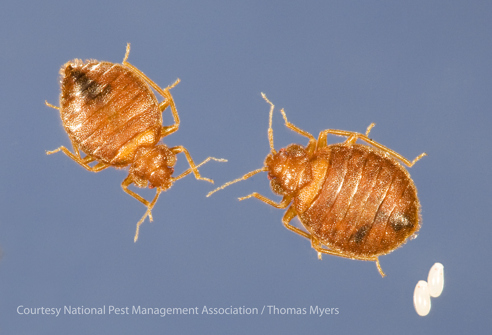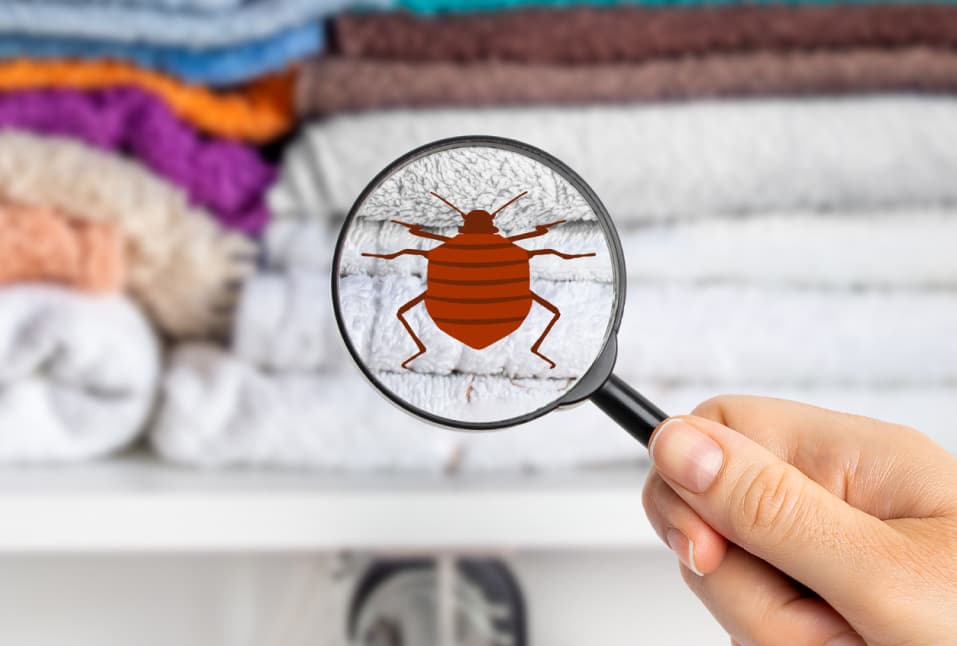How to Recognize Bed Bug Bites and Treat Them Quickly
How to Recognize Bed Bug Bites and Treat Them Quickly
Blog Article
Get Enlightened Regarding the Types of Pest Control Approaches and Their Benefits for Homeowners
Understanding the different bug control approaches available to house owners is crucial for effective insect administration. Home owners that are well-informed can make tactical options that not only address parasite concerns but also enhance the general high quality of their living atmosphere.
Chemical Parasite Control Approaches
Chemical pest control methods are a crucial part of integrated pest management techniques for home owners looking for efficient remedies to pest invasions. These approaches involve the application of chemical compounds made to get rid of or hinder insects that threaten personal residential or commercial property, health and wellness, and comfort. Common chemicals used include insecticides, fungicides, herbicides, and rodenticides, each tailored to target particular pests.
The primary benefit of chemical bug control is its fast effectiveness; many solutions give instant results, reducing pest populaces substantially in a short time. Additionally, breakthroughs in chemical solutions have led to items that are much more eco-friendly and have lower poisoning levels for non-target organisms when used correctly.

Biological Insect Control Methods
Natural insect control techniques have actually obtained prestige as home owners look for more secure and more lasting choices to traditional chemical approaches. Biological pest control strategies utilize all-natural killers, bloodsuckers, or virus to take care of bug populations efficiently. This technique is not only environmentally friendly yet additionally decreases the threat of damage to non-target types, including advantageous insects and wild animals.
Among the most common organic control approaches includes introducing all-natural killers into the environment. For instance, ladybugs can be utilized to manage aphid populations, while nematodes target soil-dwelling parasites like grubs. Additionally, parasitoids-- microorganisms that survive on or within a host-- can be employed to regulate particular insect varieties by laying eggs inside them, eventually resulting in their death.
One more method is using biopesticides, which are acquired from natural products such as plants, microorganisms, or minerals (bed bug exterminator). These products can properly target insects while posturing very little threat to family pets and humans. Generally, biological bug control techniques supply homeowners with an effective means of insect monitoring that aligns with eco-friendly concepts, promoting a much healthier living environment while lowering reliance on artificial chemicals
Mechanical Parasite Control Techniques
Mechanical pest control approaches encompass a range of approaches that physically avoid or remove pests without the use of chemicals. These methods are specifically advantageous for house owners looking for environmentally friendly choices while making certain the safety of their space.
One usual approach is the use of barriers, such as catches, webs, and displays, which prevent pests from entering homes or particular areas. Setting up window screens can efficiently keep insects out, while using physical barriers around yards can hinder bigger bugs like deer or rabbits. Furthermore, mechanical traps designed for rodents can record and get rid of these parasites without the requirement for hazardous compounds.
Another effective strategy entails the usage of vacuums and brooms to eliminate insects directly from surface areas. Routine cleaning and maintenance can significantly reduce parasite populaces by getting rid of food sources and concealing areas. Utilizing devices like ultrasonic parasite repellents can prevent various pests via noise waves that are undesirable to them however faint to people.
Cultural Bug Control Practices
Cultural parasite control methods focus on changing the environment and monitoring methods to develop conditions that are much less for pest problems. These methods are basic in maintaining a balanced ecosystem and decreasing the dependence on chemical treatments. By altering agricultural methods, house owners can successfully discourage bugs while promoting plant wellness.
One usual approach consists of plant rotation, which interferes with the life cycles of bugs by transforming the sorts of plants expanded in a specific area (bed bug exterminator). This not just minimizes pest discover this populations yet also enhances dirt wellness. Additionally, intercropping-- planting varied plants in proximity-- can confuse bugs and lower their ability to locate their favored host plants
Water monitoring is an additional vital element of social techniques. Proper irrigation techniques can stop standing water, which offers as a reproduction ground for insects and other pests. Keeping sanitation in and around the home, such as regularly removing particles and food waste, can significantly reduce pest attraction.
Incorporating these cultural techniques right into a thorough bug monitoring method enables property owners to produce an atmosphere that naturally deters pests, thereby enhancing the performance of various other control techniques while promoting sustainable horticulture and landscaping.

Integrated Pest Monitoring Approaches
Integrated Insect Monitoring (IPM) represents an all natural technique that combines click here to read different strategies to successfully manage bug populaces while lessening environmental effect. This technique integrates organic, cultural, physical, and chemical methods to attain sustainable bug control. By assessing pest populations and their all-natural adversaries, IPM highlights surveillance and identifying insects prior to implementing control steps.
Among read what he said the core concepts of IPM is the use of thresholds, which develop the degree of pest activity that calls for treatment. This guarantees that treatments are used just when necessary, decreasing the reliance on chemical pesticides. Organic control approaches, such as presenting natural predators or parasites, work in combination with social techniques like plant rotation and habitat manipulation to interrupt pest life process.
In addition, IPM urges the use of least-toxic chemical options when intervention is required, prioritizing items that present marginal threat to non-target microorganisms and the setting. For homeowners, adopting IPM approaches not just enhances the efficacy of pest management but also advertises a much healthier living environment, cultivating biodiversity and reducing chemical exposure. Ultimately, IPM empowers homeowners to make enlightened choices that stabilize insect control with ecological duty.
Final Thought
In verdict, recognizing the various pest control approaches encourages house owners to make informed choices relating to pest management. Each technique-- chemical, biological, mechanical, cultural, and incorporated insect management-- offers distinct benefits that provide to various demands and preferences.
Understanding the numerous insect control methods available to house owners is necessary for efficient bug monitoring.Chemical bug control methods are a critical part of integrated bug monitoring methods for property owners seeking effective solutions to pest infestations. Generally, biological parasite control strategies provide home owners with a reliable methods of pest administration that aligns with environmental principles, promoting a healthier living environment while lowering reliance on synthetic chemicals.
Social pest control practices focus on customizing the setting and monitoring methods to create problems that are less helpful to pest infestations.In verdict, recognizing the different pest control approaches encourages homeowners to make educated choices regarding pest administration.
Report this page